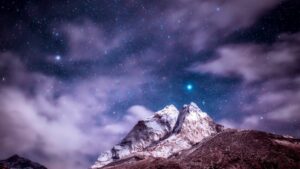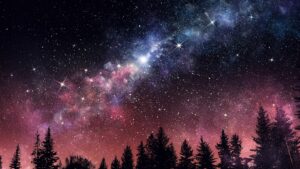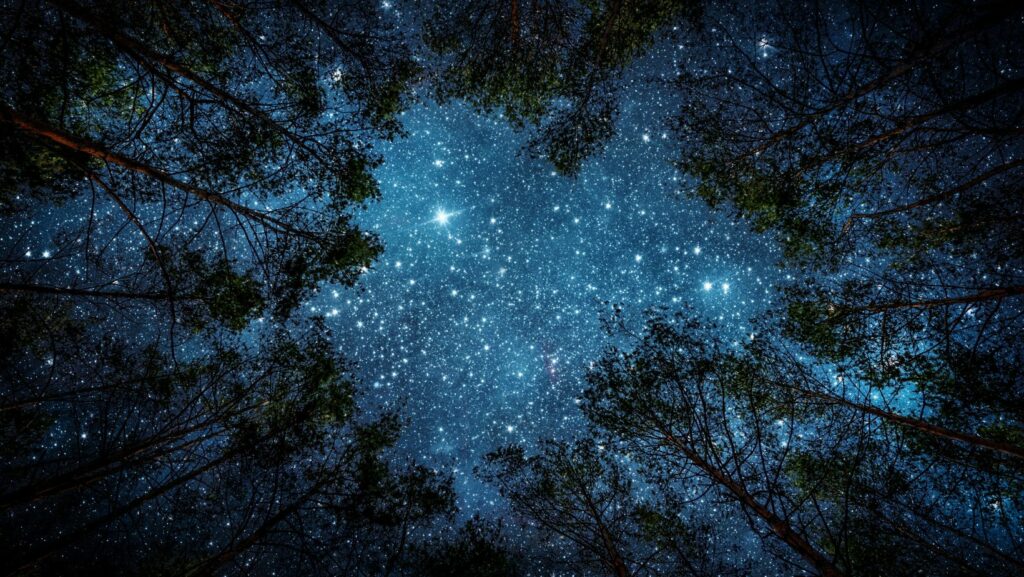Capturing the night sky’s beauty is an art that requires skill, patience, and a touch of creativity. Three-star photography, a captivating niche within astrophotography, focuses on capturing the alignment and brilliance of three prominent stars. This technique not only highlights the celestial wonders above but also offers a unique perspective on the vastness of the universe.
Three Star Photography
 Three star photography captures the alignment and brilliance of three prominent stars within a single frame. It falls under the broader category of astrophotography, utilizing techniques that emphasize precision and artistic composition. This practice includes identifying star groupings that create compelling visual contrasts against the night sky.
Three star photography captures the alignment and brilliance of three prominent stars within a single frame. It falls under the broader category of astrophotography, utilizing techniques that emphasize precision and artistic composition. This practice includes identifying star groupings that create compelling visual contrasts against the night sky.
Photographers often select wide-angle lenses to incorporate more of the surrounding celestial environment. They typically conduct night sky surveys to map out potential stars to capture over relevant geographic locations. Long exposure settings, combined with the right timing, are crucial to ensure clarity and brightness in the final image.
Light pollution poses a challenge for capturing stars. By selecting remote locations or using specialized filters that block artificial light, photographers achieve better results. These strategies allow for a more accurate depiction of star alignments and their unique luminescence. Advanced methods like stacking multiple exposures also enhance the details.
Understanding the technical aspects, such as ISO settings and aperture adjustments, further refines the process. Knowledge of astronomical software aids in predicting celestial events, providing photographers with opportunities to plan three star alignment captures effectively.
Equipment Essentials
Three-star photography demands precise tools to capture celestial alignments effectively. Investing in the right equipment is crucial for producing striking astrophotography images.
Cameras and Lenses
A DSLR or mirrorless camera with manual settings is essential for three-star photography. These cameras offer flexibility with ISO adjustments, long exposures, and aperture settings. Full-frame sensors enhance light sensitivity, capturing detail in low light. Wide-angle lenses (14-24mm), often favored for night sky shots, allow expansive views and can capture more than just stars when positioned carefully.
Tripods and Accessories
Stability is a necessity for capturing clear star images. A sturdy tripod helps maintain long exposure settings without blur. Consider using a remote shutter release to reduce shake. Additional accessories like red-lens flashlights assist in dark environments, and dew heaters prevent lens fogging, ensuring that equipment functions optimally during shoots.
Techniques for Capturing Starry Skies
Three-star photography thrives on mastering specific techniques that enhance the night sky’s wonder. Achieving the perfect shot requires attention to detail and an understanding of astro photography fundamentals.
 Long Exposure Tips
Long Exposure Tips
Long exposure is vital in capturing three-star alignments in low-light conditions. Keeping the exposure time between 15-30 seconds captures enough light while minimizing star trails.
Using the “500 Rule,” which involves dividing 500 by the focal length, helps determine the maximum exposure time without star trailing. Lower ISO settings, like 800-1600, reduce noise, balancing sensitivity and clarity.
Focusing and Composition
Achieving sharp focus is crucial in three-star photography. Manually focus the lens to infinity, then fine-tune by checking clarity in the camera’s LCD live view. Live view magnification assists in accurately pinpointing focus on stars. Composing images takes creativity; including elements like silhouettes of trees or mountains provides context, framing the celestial scene aesthetically.
Post-Processing Star Photos
Post-processing plays a crucial role in three-star photography by refining raw images and highlighting celestial details. Utilizing software optimizes the alignment and brilliance of stars captured in the night sky.
Editing Software
Choosing the right editing software enhances the quality of star photos. Adobe Lightroom and Photoshop are popular choices among astrophotographers for their advanced features. They offer noise reduction tools that minimize graininess from high ISO settings.
Enhancing Star Details
 Techniques for enhancing star details include adjusting contrast and clarity. Increasing contrast separates the stars from the background, making them more prominent. Adjusting clarity enhances the sharpness of star edges without increasing noise.
Techniques for enhancing star details include adjusting contrast and clarity. Increasing contrast separates the stars from the background, making them more prominent. Adjusting clarity enhances the sharpness of star edges without increasing noise.
As they navigate the challenges posed by light pollution and technical intricacies, photographers are rewarded with breathtaking images that celebrate the night sky’s splendor. Whether they’re seasoned professionals or passionate amateurs, those who embark on this journey find endless opportunities to create stunning visual narratives.



